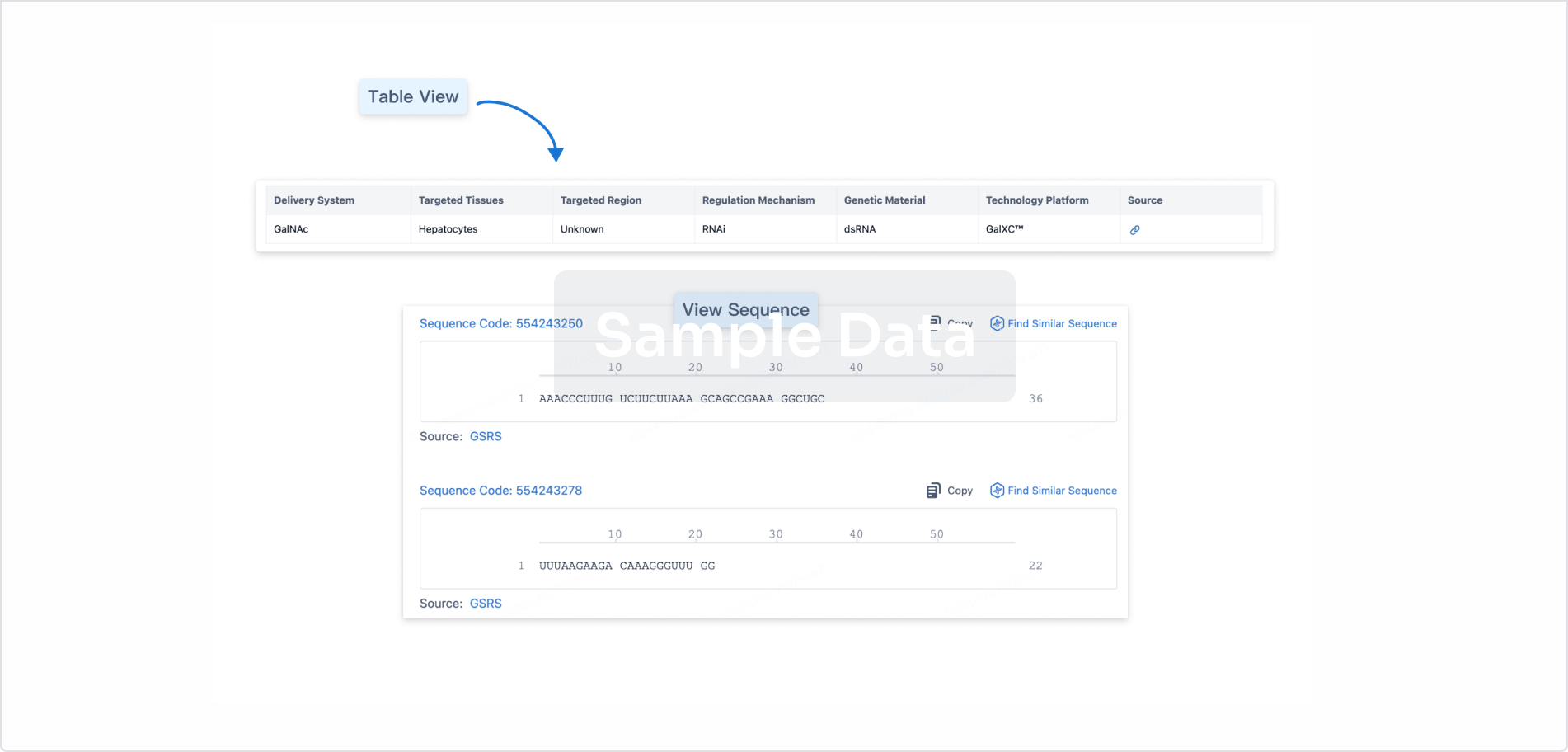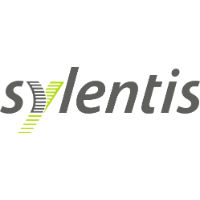Request Demo
Last update 10 Dec 2025
Tivanisiran
Last update 10 Dec 2025
Overview
Basic Info
Drug Type siRNA |
Synonyms Tivanisiran Sodium, SYL-1001, SYL-1001 DP + [1] |
Target |
Action antagonists |
Mechanism TRPV1 antagonists(Transient receptor potential cation channel subfamily V member 1 antagonists), RNA interference |
Therapeutic Areas |
Active Indication- |
Inactive Indication |
Originator Organization |
Active Organization- |
Inactive Organization |
License Organization- |
Drug Highest PhasePendingPhase 3 |
First Approval Date- |
Regulation- |
Login to view timeline
Structure/Sequence
Boost your research with our RNA technology data.
login
or

Sequence Code 29695537

Source: *****
Sequence Code 29695580

Source: *****
R&D Status
10 top R&D records. to view more data
Login
| Indication | Highest Phase | Country/Location | Organization | Date |
|---|---|---|---|---|
| Sjogren's Syndrome | Phase 3 | United States | 25 May 2021 | |
| Sjogren's Syndrome | Phase 3 | Spain | 25 May 2021 | |
| Dry Eye Syndromes | Phase 3 | Estonia | 18 May 2017 | |
| Dry Eye Syndromes | Phase 3 | Germany | 18 May 2017 | |
| Dry Eye Syndromes | Phase 3 | Italy | 18 May 2017 | |
| Dry Eye Syndromes | Phase 3 | Portugal | 18 May 2017 | |
| Dry Eye Syndromes | Phase 3 | Slovakia | 18 May 2017 | |
| Eye Pain | Phase 2 | Estonia | 01 Jun 2015 | |
| Eye Pain | Phase 2 | Spain | 01 Jun 2015 |
Login to view more data
Clinical Result
Clinical Result
Indication
Phase
Evaluation
View All Results
| - | 203 | kfnwoccyuy(inrofyuffs) = not reached the endpoint jjcknycuss (hsaewgcedl ) | Negative | 09 Feb 2024 | |||
Phase 3 | 301 | rwnwusrdjy(vwfqeldogy) = wzpphxecus xfdocvpglr (zxoekvnlkj ) Met | Positive | 18 Dec 2023 | |||
control | rwnwusrdjy(vwfqeldogy) = cttjuvthlz xfdocvpglr (zxoekvnlkj ) Met | ||||||
Phase 2/3 | - | ggdbaeykzb(xztrpedamp) = pwagoynisl oxutqgoosa (fcjchvdqpm ) View more | - | 01 Jul 2019 | |||
Placebo | ggdbaeykzb(xztrpedamp) = dbwoifdigs oxutqgoosa (fcjchvdqpm ) View more | ||||||
Phase 3 | - | prenrecuiv(lsafefyovh) = byhmxejsfw hiwgtaftio (fbifcbgvfi ) View more | Positive | 31 Jan 2019 | |||
Vehicle | fewccjlwkm(xkrxmttzbl) = bicdkbgjhb vpnovlyaym (droyqqvqte ) | ||||||
Phase 1/2 | 156 | udqamyzbyz(gemabuoeqj) = ymisgzmrnx azrtpbwajb (sicqspglfh, 0.32) View more | Positive | 01 Nov 2016 | |||
Placebo | udqamyzbyz(gemabuoeqj) = ffgqgeuarc azrtpbwajb (sicqspglfh, 0.34) View more |
Login to view more data
Translational Medicine
Boost your research with our translational medicine data.
login
or

Deal
Boost your decision using our deal data.
login
or

Core Patent
Boost your research with our Core Patent data.
login
or

Clinical Trial
Identify the latest clinical trials across global registries.
login
or

Approval
Accelerate your research with the latest regulatory approval information.
login
or

Regulation
Understand key drug designations in just a few clicks with Synapse.
login
or

AI Agents Built for Biopharma Breakthroughs
Accelerate discovery. Empower decisions. Transform outcomes.
Get started for free today!
Accelerate Strategic R&D decision making with Synapse, PatSnap’s AI-powered Connected Innovation Intelligence Platform Built for Life Sciences Professionals.
Start your data trial now!
Synapse data is also accessible to external entities via APIs or data packages. Empower better decisions with the latest in pharmaceutical intelligence.
Bio
Bio Sequences Search & Analysis
Sign up for free
Chemical
Chemical Structures Search & Analysis
Sign up for free
